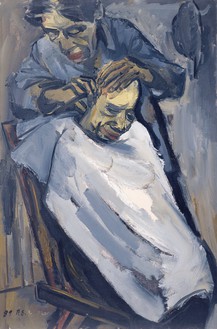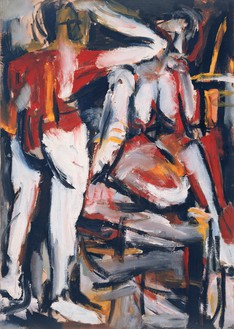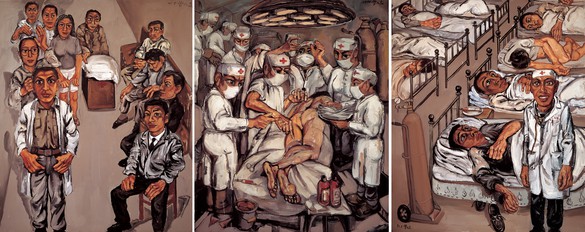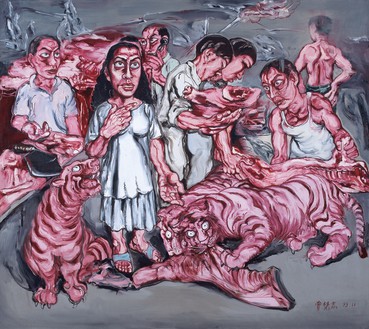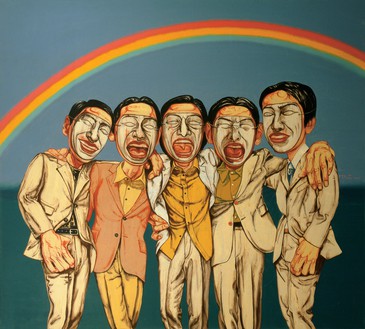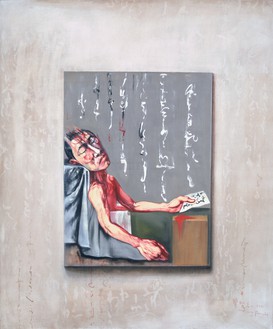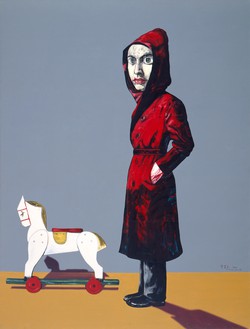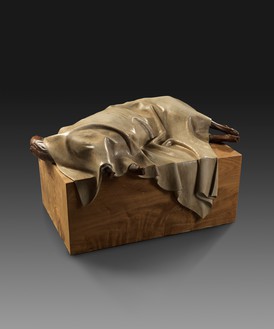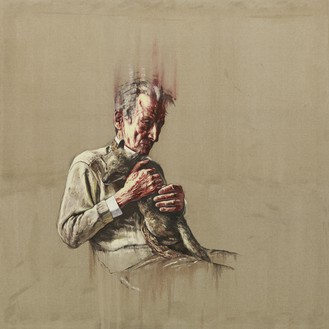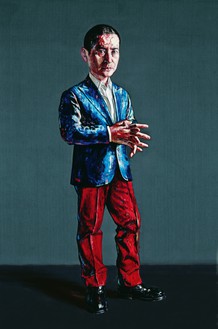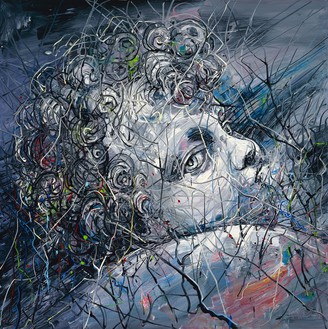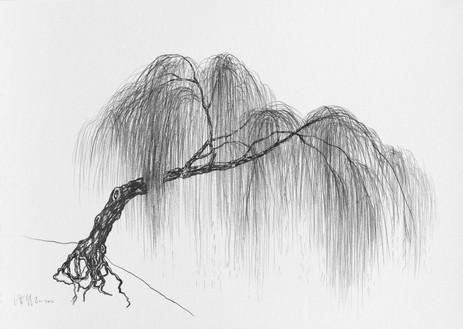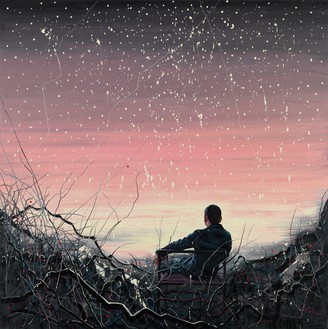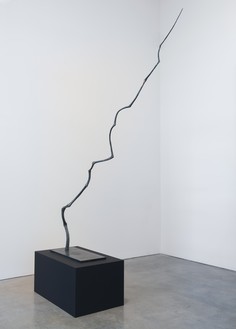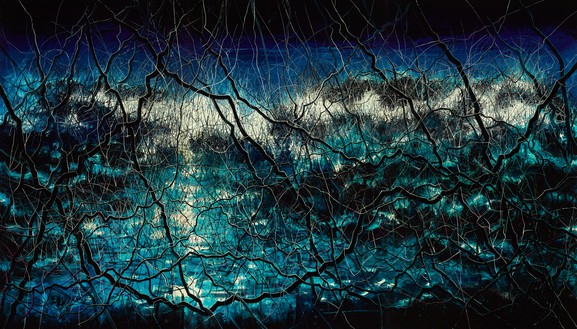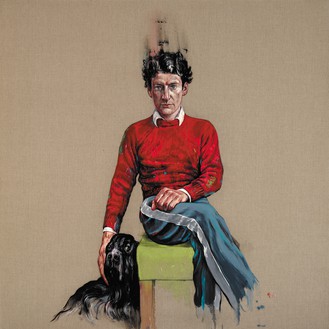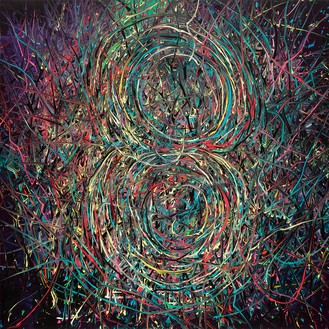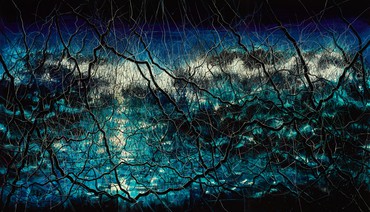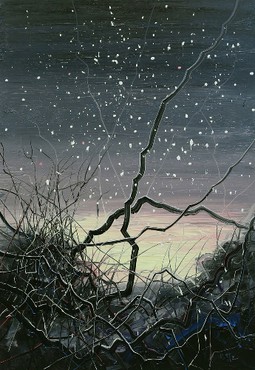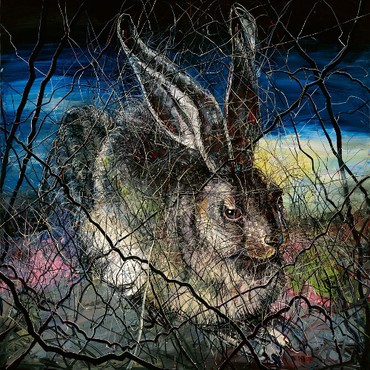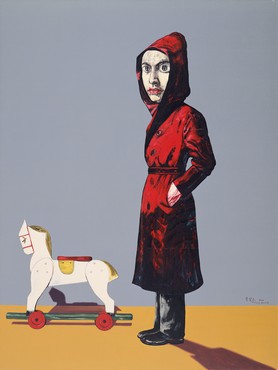About
Zeng Fanzhi’s visually and historically complex paintings reflect his bold experimentation with, and fusion of, Eastern and Western artistic traditions.
Born and raised in Wuhan, China, Zeng graduated from the Hubei Institute of Fine Arts, Wuhan, in 1991. From the nineteenth century until the 1990s, Wuhan was one of China’s most prosperous cities and witness to a collision of Western and Eastern cultures. During his youth Zeng was inspired by China’s ’85 New Wave movement, which saw artists search for a new, often more conceptual, language after the Cultural Revolution of the 1960s and 1970s. Zeng closely followed and studied Western art and was particularly drawn to German Expressionism and French Romanticism, through which he observed the ways in which his predecessors processed and visualized their experiences during times of extreme societal flux. He was especially drawn to the bold expressive gestures of Max Beckmann, as well as artists such as Willem de Kooning and Edvard Munch. These influences led him to deviate from the Social Realism that he was taught in school. Instead, he keenly observed objects and images from daily life. His Hospital (1991–92) and Meat (1992–94) paintings are examples of this turn. In these visceral works, he painted the skin of his subjects a pinkish color resembling slaughtered meat, demonstrating his concern and compassion for human existence and fragility.
In 1993 Zeng relocated to Beijing, where the unfamiliar environment left him feeling isolated. During this time he became keenly aware of the people he encountered, from all walks of life, who were living through a period of rapid modernization. This awareness led to the creation of his Mask works (1994–2004), a series that preserved the large, vacant eyes and thick, clumsy hands of the subjects seen in prior paintings and introduced greater distance between the figures, creating a sense of alienation. The masks in these works obscure and divert from the subjects’ feelings and hint at Zeng’s apprehension toward and rejection of society’s accelerated, systematic development. These works not only provide a record of this period of profound social transformation, but also offer a glimpse of the collective memory of this era.
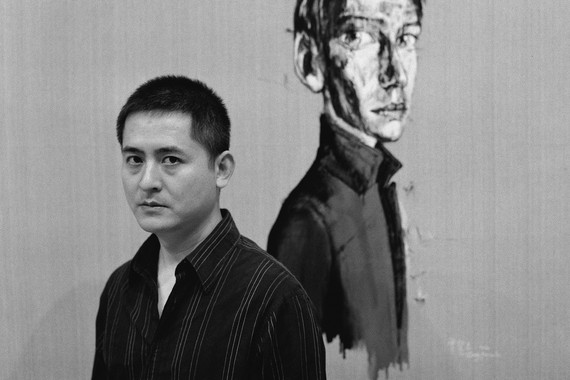
Photo: courtesy Zeng Fanzhi
#ZengFanzhi
Exhibitions

Artist to Artist: Georg Baselitz and Zeng Fanzhi
On the occasion of Georg Baselitz: Years later at Gagosian, Hong Kong, Zeng Fanzhi composed a written foreword for the exhibition’s catalogue and a video message to the German painter. Baselitz wrote a letter of thanks to the Chinese artist for his insightful thoughts.

Zeng Fanzhi on Cézanne, Morandi, and Sanyu
Zeng Fanzhi speaks about curating the exhibition Cézanne, Morandi, and Sanyu at Gagosian, Hong Kong, and the connections between the three artists’ works. Interview by Jin Jing.
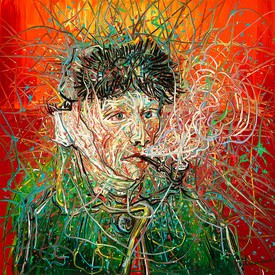
Zeng Fanzhi | Van Gogh
Zeng Fanzhi discusses his approach to the Zeng Fanzhi | Van Gogh exhibition in Amsterdam and the various ways the renowned Dutch painter continues to inspire artists today.
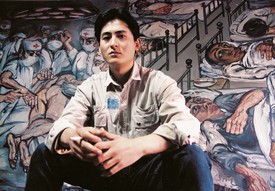
Zeng Fanzhi: The Early Years
Gladys Chung investigates the formative stages of this artist’s career.
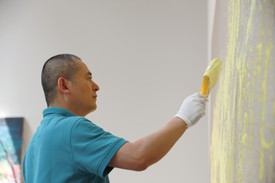
Zeng Fanzhi’s Blue
A slideshow containing photographs of the creation of Blue (2015) by Zeng Fanzhi.
Fairs, Events & Announcements
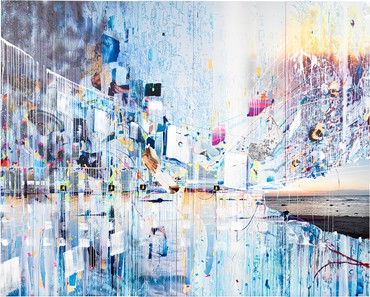
Art Fair
Art Basel Hong Kong 2024
March 27–30, 2024
Hong Kong Convention and Exhibition Centre
www.artbasel.com
Gagosian is participating in Art Basel Hong Kong 2024 with a selection of works by international contemporary artists. The works on view, which embrace a dizzying variety of subjects and approaches, see the participating artists identify fresh ways to disrupt established histories of abstraction and figuration, and instill sculptural and painterly representations of the natural world with complex cultural significance.
Sarah Sze, Turning and Turning, 2024 © Sarah Sze. Photo: Maris Hutchinson
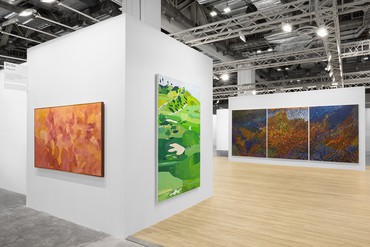
Art Fair
ART SG 2024
January 19–21, 2024, booth BC06
Marina Bay Sands Expo and Convention Centre, Singapore
artsg.com
Gagosian is pleased to participate in the second edition of ART SG, with a selection of works by international contemporary artists including Harold Ancart, Georg Baselitz, Ashley Bickerton, Amoako Boafo, Dan Colen, Edmund de Waal, Nan Goldin, Lauren Halsey, Hao Liang, Keith Haring, Damien Hirst, Tetsuya Ishida, Alex Israel, Donald Judd, Y.Z. Kami, Emily Kame Kngwarreye, Rick Lowe, Takashi Murakami, Takashi Murakami & Virgil Abloh, Nam June Paik, Ed Ruscha, Jim Shaw, Alexandria Smith, Spencer Sweeney, Stanley Whitney, Jonas Wood, and Zeng Fanzhi. The works on view, which embrace a wide variety of subjects and approaches, find artists infusing traditional genres such as history painting, portraiture, and landscape with new and surprising ideas that traverse cultural and temporal boundaries.
Gagosian’s booth at ART SG 2024. Artwork, left to right: © ADAGP, Paris, 2024, © Jonas Wood, © Rick Lowe Studio. Photo: Ringo Cheung
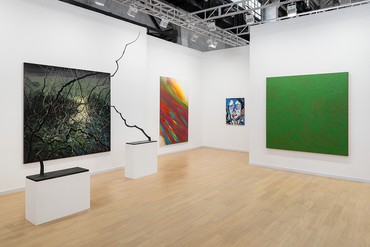
Art Fair
West Bund Art & Design 2023
November 9–12, 2023, booth A102
West Bund Art Center, Shanghai
www.westbundshanghai.com
Gagosian is pleased to participate in West Bund Art & Design with an extensive group presentation. The gallery will exhibit works by Harold Ancart, Georg Baselitz, Glenn Brown, Urs Fischer, Katharina Grosse, Hao Liang, Damien Hirst, Thomas Houseago, Alex Israel, Jia Aili, Anish Kapoor, Yayoi Kusama, Takashi Murakami, Takashi Murakami & Virgil Abloh, Albert Oehlen, Nam June Paik, Ed Ruscha, Alexandria Smith, Spencer Sweeney, Cameron Welch, Jonas Wood, and Zeng Fanzhi.
Gagosian’s booth at West Bund Art & Design 2023. Artwork, left to right: © Zeng Fanzhi; © Katharina Grosse and VG Bild-Kunst, Bonn, Germany 2023; © Spencer Sweeney; © Yayoi Kusama. Photo: Alessandro Wang
Museum Exhibitions
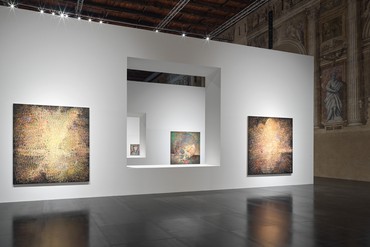
On View
Zeng Fanzhi
Near and Far/Now and Then
Through September 30, 2024
Scuola Grande della Misericordia, Venice
www.lacma.org
Near and Far/Now and Then, organized by the Los Angeles County Museum of Art on the occasion of the 60th Biennale di Venezia, features new work by Zeng Fanzhi. The installation, designed by architect Tadao Ando, premieres two recent bodies of work by the artist—new abstract paintings and the debut of works on handmade paper rendered in ink, graphite, chalk, and gold dust, among other mineral pigments—and aims to shed light on Zeng’s ambitious practice of redefining the abstract through exercises in figurative representation, and vice versa.
Installation view, Zeng Fanzhi: Near and Far/Now and Then, Scuola Grande della Misericordia, Venice, April 17–September 30, 2024. Artwork © 2024 Zeng Fanzhi. Photo: Stefan Altenburger
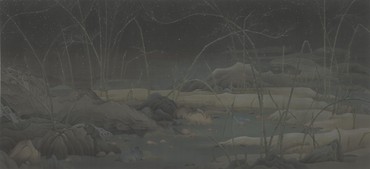
On View
Duration
Chinese Art in Transformation
Opened September 25, 2020
Minsheng Art Museum, Beijing
www.msam.cn
Duration: Chinese Art in Transformation attempts to show how every moment that stretches is an absorption of the past, and the endless possibilities of the future are based on the past and the present. The exhibition presents painting, sculpture, installation, video, animation, and more from the 1970s to the present. Work by Hao Liang, Jia Aili, and Zeng Fanzhi is included.
Hao Liang, Eight Views of Xiaoxiang—Snowscape, 2014–15 © Hao Liang. Photo: courtesy UCCA Center for Contemporary Art, Beijing
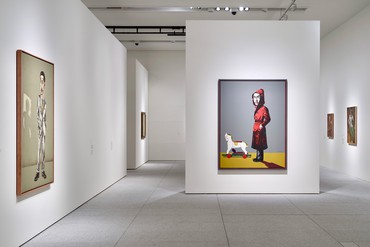
Closed
Zeng Fanzhi
Old and New (Paintings 1988–2023)
September 27, 2023–March 8, 2024
Museum of Art Pudong, Shanghai
www.museumofartpd.org.cn
Zeng Fanzhi: Old and New (Paintings 1988–2023) includes more than sixty paintings from the last thirty-five years, grouped in four interrelated yet distinct sections: “The Early Years,” “Different Paths,” “Painting as Contemplation,” and “Monumentals.” It also features a painting Zeng made on-site at the Museum of Art Pudong, as well as video and sound experiments inspired by the experience of viewing the exhibition, which were carried out by a friend of the artist’s, celebrated film director Er Cheng, and Cheng’s team.
Installation view, Zeng Fanzhi: Old and New (Paintings 1988–2023), Museum of Art Pudong, Shanghai, September 27, 2023–March 8, 2024. Artwork © Zeng Fanzhi. Photo: Achen
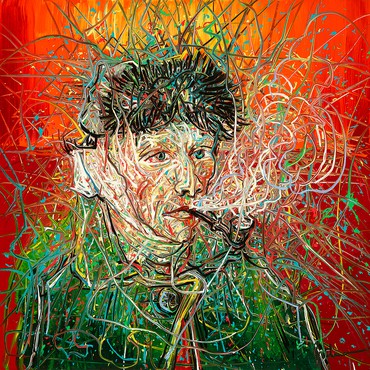
Closed
Zeng Fanzhi | Van Gogh
October 20, 2017–March 5, 2018
Van Gogh Museum, Amsterdam
www.vangoghmuseum.nl
This show marks the first time the Van Gogh Museum has invited a contemporary Asian artist to exhibit at the institution. Zeng Fanzhi, who has been inspired by the artist, presents new never-before-exhibited paintings that refer to works by Van Gogh in the museum’s collection, creating a dialogue between modern and contemporary art. The show was extended to accommodate the addition of a new painting.
Zeng Fanzhi, Van Gogh III, 2017 © Zeng Fanzhi
